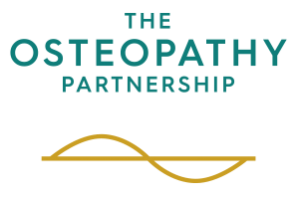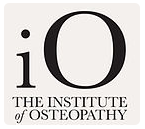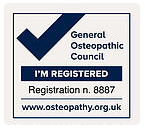Almost all my patients that have lower back pain also have a tight Psoas. There is quite a lot written about this muscle and its close neighbour the iliacus but most of my patients are unaware of its role in their posture and how it can play a role in their back pain.
Where is it and what does it do?
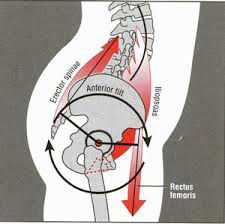 The Psoas originates on your lumbar spine attaching to the transverse processes of your lumbar vertebrae and the twelth thoracic vertebrae. The Psoas then blends with the Iliacus which originates on the anterior aspect of the ilium and then they both attach to the lesser trochanter of the femur.
The Psoas originates on your lumbar spine attaching to the transverse processes of your lumbar vertebrae and the twelth thoracic vertebrae. The Psoas then blends with the Iliacus which originates on the anterior aspect of the ilium and then they both attach to the lesser trochanter of the femur.The Iliopsoas is the largest and most powerful hip flexor. When it is short and tight it can cause the pelvis to rotate forward- an anterior tilt.
Implications for your lower back
Your lumbar spine curves more causing increased pressure on your intervertebral discs. The Postural muscles in your back become shorter and tighter too reducing your flexibilty. Joints stop moving increasing the risk of inflammation. This rotation of the pelvis also puts your Gluteal muscles- Glut Max and Medius on a stretch making them weaker. So when you ask your body to walk or run the lower back muscles have to work even harder to make up for weaker gluteals.
How does it happen?
It doesn’t happen over night! But over years. Years of sitting at our desks, at our computers, sitting down in front of the TV, eating our dinner, commuting sitting down, driving. Even one of our favourite sports – cycling involves us being seated! So it is no wonder that this muscle can become shortened and tight. We just don’t stretch it out enough and we dont use the opposite muscles – our Gluteals- enough to maintain the balance.
Regaining the Balance
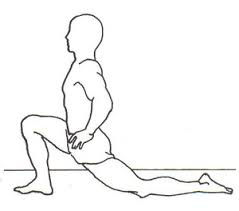 Stretching the Psoas and Strengthening the Gluts.
Stretching the Psoas and Strengthening the Gluts.
The Psoas stretch. To make this even more effective take the arm of the side your are stretching and move it up in an arc to your ear. This creates a simultaneous side bend and stretch. Repeat 10-15 times on both sides
After you have stretched your Psoas you can then work on strengthening your Gluteals. This exercise is specifically targeting Glut Max. It is a lunge walk. Find approx 10m where you can lunge walk. This will help strenghten your Glut max, and addcutors. It is dynamic and also promotes balance/proprioception as you move from one extreme step to another.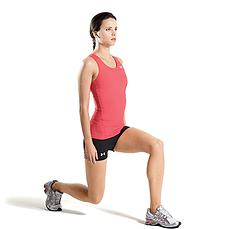
There are, of course, many causes of back pain but these muscles are more often than not involved in the problem. If you suffer from acute or long term back pain then a combination of osteopathy and these types of therapeutic exercises can really help.
How can Osteopathy Partnership help?
When patients are in pain the muscles are in spasm. Joints are no longer moving and are often inflamed. At the Osteopathy Partnership we understand that if the structure isn’t working then muscles and joints can no longer function properly. So we work on getting the structure back to normal, improving circulation to soft tissue and giving the body the space it needs to heal itself. Then we give well thought out therapeautic exercises that are going to help our patients improve and maintain their body’s mobility and so reduce the risk of recurrence.
For more information contact Hugo at the Osteopathy Partnership 0208 226 3767 or www.osteopathypartnership.com
